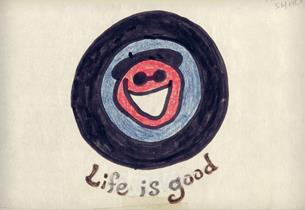While many families chose warm weather destinations for the February school vacation, my son AJ and I took a road trip to Vermont and upstate New York. No, we are not skiers.
Why would we choose a subzero-temperature week to travel to these northern locales?
To look at colleges.
AJ is a junior in high school. Though he will not be applying to colleges until next fall, we are visiting now so that he will know where he wants to apply then.
As with most parenting experiences, I have learned something about myself in this process: 20+ years of market research experience positions you well to be a college search guide.
Once on campus, AJ and I immerse ourselves in the environment to get insights beyond the standard tour and information session. AJ participates in a German class if possible as that is a key area of interest for him. We eat at the campus dining hall. We interview students and professors. We look at posters and read the school papers to see what is going on.
Let me tell you, colleges have changed since we were there. Among the new developments:
- Several schools boast Quidditch teams (Harry Potter fans know what I mean).
- The food is SOOOOO much better. I was able to identify everything that was served. The lettuce was green and looked like it had been picked during this calendar year.
- Roommate matching questionnaires have improved substantially, with questions like “Do you listen to music with or without headphones?” and “Are you neat or messy?”
Each college trip is an investment in time and money, but it is part of our planning to help AJ choose a college that he will enjoy and where he will be successful.
Like teenagers planning for college, brands in adolescence need to plan for their next phase of growth.
Unlike teenagers headed for college though, the timing of when brands in adolescence need to plan isn’t always obvious. And since it isn’t obvious, many brands stall before the company realizes it.
Life is Good is a brand in adolescence with foresight.
While most brands react when sales stagnate, Life is Good is planning their next stage of growth and evolving their brand when…well, when life is good.
Life was rough for the brand in the beginning though. In 1989, brothers John and Bert Jacobs were in their early 20s and wanted to make art. They founded Jacobs Gallery and began their careers selling t-shirts on the street as a way to market their original artwork. After five years of barely squeaking by and living in a van, they hit on the idea of infusing their desire to spread optimism into their work and founded Life is Good.
As their t-shirts’ popularity spread, they grew the company by focusing on apparel. They have featured their signature characters, Jake and his faithful dog Rocket, in hundreds of designs and on many different products.
After two decades, the message of “spreading optimism” still resonates and their business remains strong. But they realized that their original core customers have matured 20 years along with the company. They wanted to retain those customers while also appealing to new, younger customers.
The need to appeal to a new market segment signaled that it was time to review and evolve the Life is Good brand.
How could they retain their older customers and appeal to younger ones at the same time?
By returning to the original purpose of the company: featuring art. In addition to presenting their own designs, Life is Good has featured many musical acts via their festivals.
Bert Jacobs recently announced that they plan to spread the brand to the next generation via their “ArtHouse Strategy”: they intend to partner with painters, sculptors, poets, filmmakers, dancers and other artists to widen the expression of how life is good. These partners will present their take on Jake and Rocket and other aspects of the brand, bringing fresh perspective and creativity.
I love this strategy. It strikes a balance between the need to be true to the essence of the brand while tapping the younger generation’s penchant for self-expression and sharing.
Life is Good is exceptional. Most brands revisit their strategy only after they have run into trouble.
Don’t wait until your brand stalls to take a strategic look at it. Here are four signs that the time has come for your brand:
- Your target audience has matured and you want to introduce the brand to a new market segment. Like Life is Good.
- Your brand’s core product has matured and you are thinking about what to introduce next.
- Your brand is regional and you are looking to expand to new territory.
- Market and/or consumer trends are leading away from your core product.
Like college planning, brand planning will involve time, money, research and probably a few road trips. And like the joy of seeing your child happy at college, it will be worth the investment.
If you liked this post, you’ll love the next one.
To have future posts sent to your inbox...

